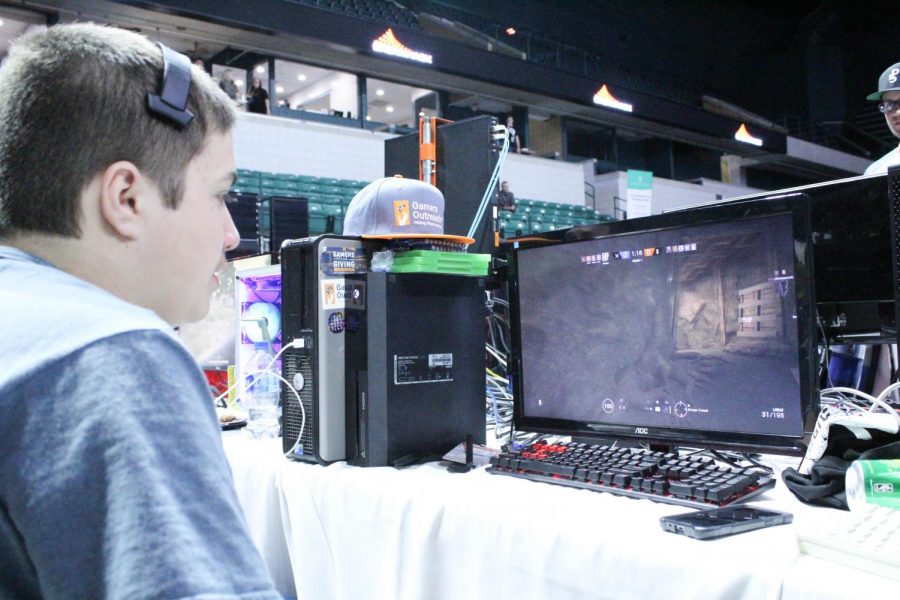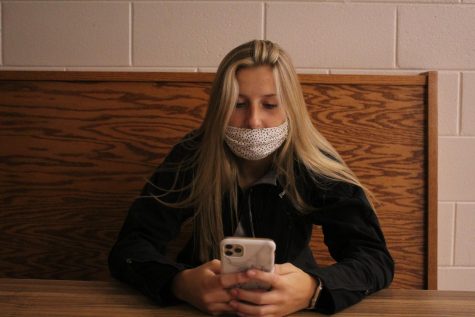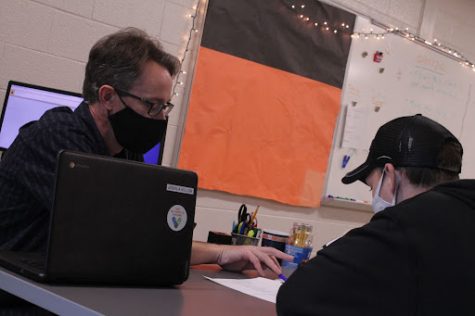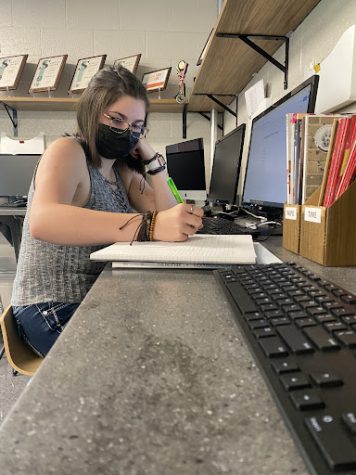Helping to fund children’s hospital while gaming
At Eastern Michigan University, eighth grader Brenden Yannella sits in front of the monitor with extreme focus on winning the game “Tom Clancy’s Rainbow Six Siege” as he plays as the character Sledge.
On April 28 the doors opened at the main arena of Eastern Michigan University’s Convocation Center. That entire weekend, gamers lined up to get into the building so they could set up their equipment and start facing danger in their digital worlds.
Gaming, an activity millions of people do, is often looked down upon by people who want to prioritize how much time someone might spend gaming.
But what would those people say to an entire weekend of gaming for children in hospitals? Raising money for kids who have been set up in lonely, white void-like rooms with medical equipment all around them.
The Gamers For Giving movement is an event many gamers support such as eighth grader Brenden Yannella. A first time attender, Yannella joined thousands of people gathering to do an activity they all enjoy. “I was happy and overjoyed because Gamers For Giving is a good cause, It’s an amazing charity and it’s just one of those things that you want to know about,” Yannella said.
Starting from a group of friends in Michigan, Gamers For Giving has grown to be a huge event, and this 10th anniversary was no different, raising over $780,000, helping thousands of children.
Gamers For Giving created something called a GO Kart, which is an easily accessed entertainment cart that has a monitor with a system, such as the Xbox One. These GO Karts support 452,600 patients per year. Some of the officials and staff of Gamers For Giving go to the hospitals as tech support, and even stay there to play the games with the children, through a program called Player 2. All of this brings the brightest of smiles to these children in need.
Yannella went to the Gamers For Giving event this year in April with his dad, Chris, and a friend.“It was one of the coolest things we have done,” said Yannella. “It’s really cool being there playing games that almost everyone likes, while raising money for children who can not.”
When attending the event, gamers are supposed to bring their own equipment. Brenden’s dad brought an old computer. “I took an old retro Apple IIgs computer this year and a ton of people asked me, ‘Is that the real thing or just the case with a PC in it?’ It was the real deal with some modern hardware attached to it,” Chris said. “The computer was in a bunch of selfies this year.”
Some people brought their equipment and just started playing and some streamed the event. “Every time a Twitch streamer raised enough money for a cart, a huge confetti popper would go off,” Chris said. “One of the streamers raised enough for 10 GoCarts.”
Another activity that was offered was to play in tournaments. The tournaments consisted of games like PUBG, Overwatch, Counter-Strike, and more.
Chris and Brenden did not attend any of these tournaments though. “A lot of the players today spend hours and hours perfecting their gameplay and there is no way I can keep up with that,” Chris said. “I am an easy target these days. Full time adulting is on my plate now, but it’s always nice to spend a bit of time playing the games you enjoy.”
If you are a gamer, or new to games, or if you want to raise money for charity, go to this event. It’s a wholesome community of gamers ready to play with you and help children in hospitals. “The event raised over $350k in just 2 days,” Chris said.
“I spent a lot of time in hospitals when I was a little kid and I totally get it. There were times I could not get down to the hospital play room because I was too sick or hooked to a bunch of medical equipment,” Chris said. “It was a great feeling knowing that we were helping raise money for kids that could not get out of their hospital rooms.”









